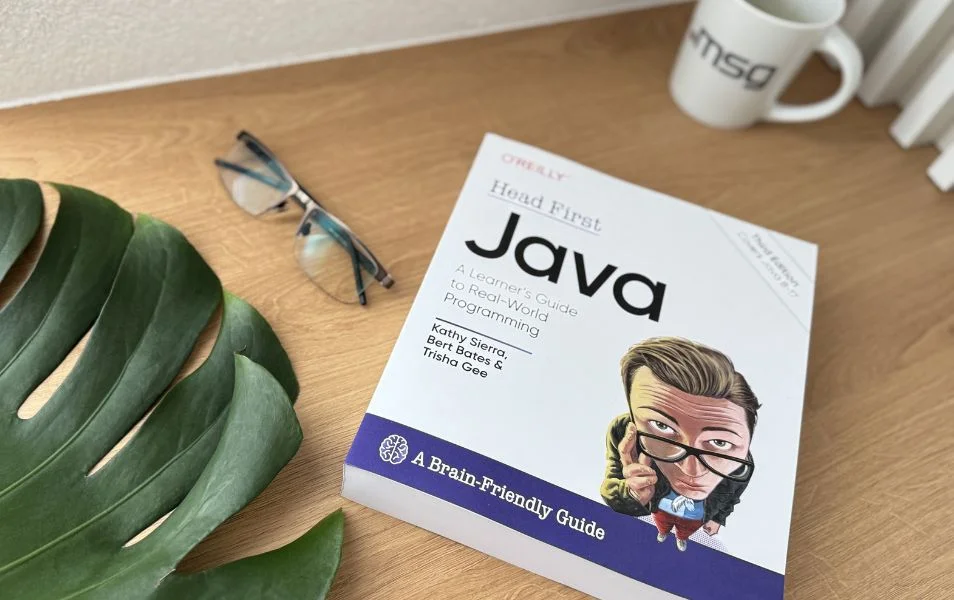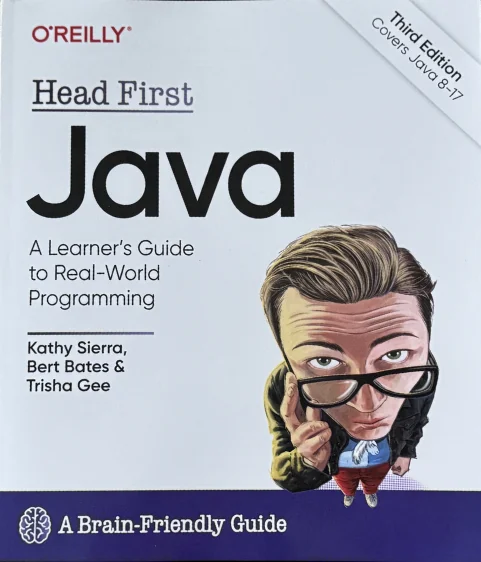Book Review of Head First Java (3rd Edition)
The Head First Java book is intended for anyone who wants to learn Java programming or who has basic knowledge and wants to extend it.

In the article you will learn:
The third edition of a book usually shows that the previous editions have found a lot of readers and have made the book popular. The same is the case here, and the third edition, released in June 2022, attempts to replicate the success of the Head First Java book series. The book has been updated for Java 17 and as the previous edition only covered Java 8, this is quite a significant leap.
Book review of Head First Java (3rd edition)
The Head First Java book impresses at first glance with its size, on almost 700 pages we find not only a lot of text but also a lot of pictures, funny notes, antique photos, crosswords, puzzles and important notes in the margins of the book. This book excels in its presentation and speaks to readers in its easy, informal style, resulting in an easy-to-read book.
The authors of Head First Java use the principles that our brains are tuned primarily to visual information and not text. Therefore, they combine text and images, and this helps make important information from the chapters easier to remember. It is no coincidence that it is said that a picture replaces hundreds of words.
It also offers many activities, because the brain is more willing to learn and remember when we are actively doing something than when we are reading about it. The exercises are challenging but manageable because that’s how most people prefer to do it. In addition, redundancy is used with gusto in the book, and much of the information is presented repeatedly in different ways and forms to encode the content in more than one area of our brain.

The Head First Java book builds gradually in the following chapters, on previously explained points, which means that the information is dispensed gradually. However, the book cannot simply be used as a reference guide.
In terms of content, the book begins with an introduction on how to use it effectively, and in the following chapters explains the features of the object-oriented Java language, covering objects and classes, primitive variables and references, object state and behavior, operators, loops, and even programming a game similar to boats.
He will then explain the JAVA API (libraries), moving on to more advanced concepts such as inheritance, polymorphism, and relationships between objects. Then comes object management, mathematical operations, sorting and data manipulation.
Advanced topics include data streams, serialization, Swing and JavaFX overviews, parallel processing. Finally, the book transparently mentions a list of Java features that didn’t make it into the book.
The code in the Head First Java book is well explained and helps in practicing the acquired Java knowledge.
Although the information in the book is correct, the dynamic developments of recent years have made many of the concepts obsolete and they are no longer used today. For example, I will mention Swing, which has been completely replaced by JavaFX technology and it is quite rare to encounter a GUI implemented on Swing technology today. Of course it is not a problem to skip these parts and continue reading.
Conclusion
Head First Java 3rd edition is an amazing book, packed with Java information in 700 pages. The authors have paid a great deal of attention to the presentation format in particular. I really like the variety of exercises, including crossword puzzles. It can be highly recommended to beginners who want to teach themselves Java in a fun way.
